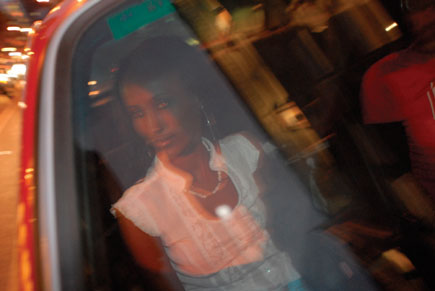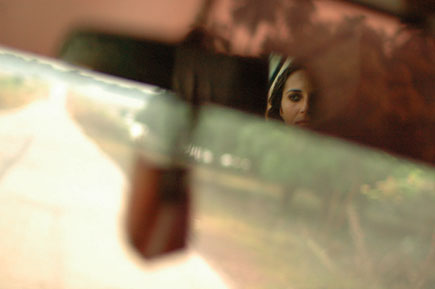Something Different By David Alan Harvey Page 2
The most important thing for David is to be able to maintain his style of working while pursuing additional photographs. "The pictures that Amanda picked out were all pictures I'd shot of women just in passing, just the way I'd shoot anybody." Because David's working style can be pretty much summed up in two words, instinctive and quick, the question was, could he do deliberately what he does naturally? "When I'm shooting, I'm working relatively fast, and mostly by instinct," he says. "My presence in the situation is always known. In all the photography I do, I become part of the scene. Which is strange because neither of my photographic heroes, Cartier-Bresson and Robert Frank, reacted with people at all. They're my heroes in terms of the way they looked at stuff, not the way they chose to photograph it."
 |
David would rather be sitting across the table than standing across the street. "I want to be part of what's going on, so I insinuate myself into the situation and take part in whatever...people are doing. They forget about me as the photographer," he has said. It works because he genuinely likes meeting people and hanging out with them. "The way I look at the world is that people are not really very different from each other. I key in on the commonalities, and I genuinely enjoy getting to know people from all over the world. It's not hard for me personally to get involved in their lives. It's not in my personality to hide at the edges and take pictures. I want to go to the dance."
 |
Would seeking pictures for the book change that? "I was worried that it might," he says, "as it's a different purpose than the stories for which I'm totally reactive. But then I started thinking about it, about some of the projects I'd done, and I realized they began with concepts that I had before I went on the assignments, and when I got there I was still photographing reality and reacting to things as they happened. With the pictures I'm taking of women there's still a great degree of spontaneity; the only difference is I deliberately choose to photograph these particular woman. And even if they pose for me, there's still what I call `the moment in between.' I take the posed picture, I'll even make a print for them, but the picture I'm actually using is something off that moment, something before or after."
 |
Finally, we wondered if he felt the book would appeal mostly to women. "I don't have the answer to that," David says. "I hadn't even thought about it. I'm just going to do it."
- Log in or register to post comments

















































